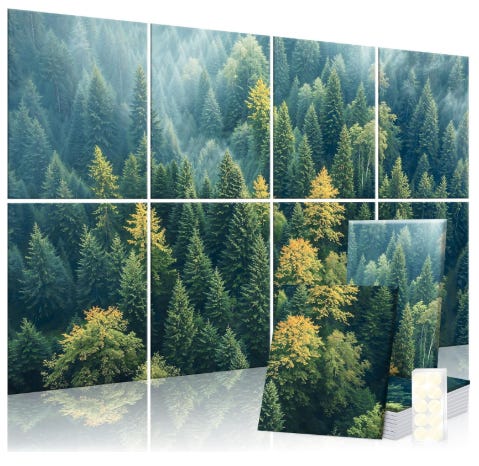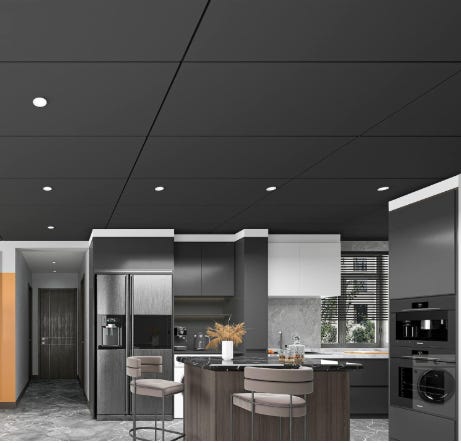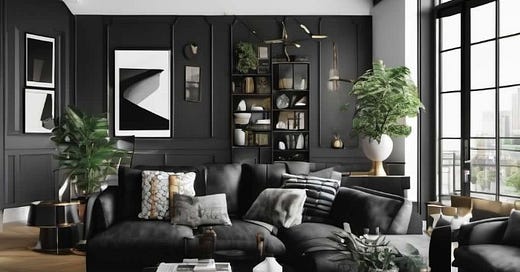Soundproof your home to block out noisy neighbors upstairs
Get a good night's sleep by soundproofing your condo or apartment
When the bed isn’t squeaking away, your upstairs neighbors are having pillow talk at 6:30 a.m. And you’ve had enough of it. While they don’t mean any harm and are just a couple in love, you would love nothing more than for them to have a piping hot cup of “Shut Up.”
ADVERTISEMENT ~ Amazon
As an Amazon affiliate, I earn a percentage from purchases with my referral links. I know some consumers are choosing to boycott Amazon for its DEI removal. However, after thinking about this thoroughly, I choose to continue promoting intriguing products from small businesses, women-owned businesses and (specifically) Black-owned businesses who still feature their items on Amazon. All five of my Substack publications now include a MINIMUM of one product sold by a Black-owned business. (I have visited the seller’s official site, not just the Amazon Black-owned logo, to verify this.) If you still choose to boycott, I 100% respect that decision.


The problem is your upstairs neighbors aren’t quite loud enough to be considered “disorderly.” You’re just a light sleeper, have not mastered sleepmaxxing*, the walls are thin and you’re a grumpy night owl who wants to sleep through the morning. You can’t tell these condo unit owners or tenants to never talk to each other before noon. They have as much right to talk (and be intimate) in their unit as you do in yours.
The best thing you can do to resolve this conundrum is to soundproof your own bedroom (or any other room) to resolve the situation on your own. It’s one of the primary tips of TikTok’s sleepmaxxing trend. So how do you soundproof your own home when the noisy neighbors upstairs won’t soundproof their home instead? Try these eight do-it-yourself projects.
Ceiling Soundproofing
Install soundproof tiles on your ceiling. A layer of drywall with soundproofing materials can also significantly reduce noise.
ADVERTISEMENT ~ Amazon
As an Amazon Affiliate, I earn a percentage for each purchase with my referral links.


Seal Gaps and Cracks
Use acoustic sealant to fill any gaps or cracks in the ceiling, doors, windows or walls to block sound (and pests) from coming through.
Recommended Read: “DIY wall repair: Is a fiber tough patch better than self-adhesive aluminum patches? ~ Yearslong procrastinating: From electric baseboard heater to wallpaper to drywall repair”
Mass-Loaded Vinyl
If you increase your ceiling’s density with heavy materials, such as mass-loaded vinyl, this may block sound waves.

Soft Furnishings
Lay down your favorite thick rugs, rubber mats or carpets with padding to absorb sound.
Upholstered Furniture
Fabric and padding trap sound waves. When sound waves hit these surfaces, they lose energy because of sound absorption. (If you decide to take on this do-it-yourself project instead of just buying upholstered furniture, you’ll need upholstery fabric, foam or batting, a staple gun, scissors, a flathead screwdriver, and an (optional) sewing machine.
Carefully, strip the old fabric. Look at the couch frame for flaws (ex. loose screws, broken components). Then, place foam or batting over the furniture frame. Smoothly secure with staples. Finally, after using the old fabric to cut new upholstery fabric, staple the new fabric upholstery to the frame again.

Rearranging furniture can also block sound pathways. Moving bookshelves or wardrobe near walls can dampen noise, one of many reasons closets work out so well for podcast recording.
Blackout Heavy Curtains
Blackout curtains are made from thick, heavy materials that can absorb sound waves. The denser the fabric, the better it will be for decreasing noise.
Recommended Read: “Privacy please: 13 of the best blackout blinds ~ Homegrown Tales listicles: The home upgrade shopping trip you didn't know you needed to take”
White Noise Machines
Invest in a white noise machine to mask unwanted noises. (You can also find free white noise options to stream on YouTube.) In addition to these sounds blocking out whispering, louder talking and other sounds, it may also be a passive aggressive hint to the noisemakers that you can hear them — if the walls are really thin, they’ll hear the white noise too.

Acoustic Fixtures
Ceiling clouds and acoustic light fixtures are designed to absorb sound and reduce echoes. These lights often use materials like felt, foam or wool, which absorbs sound waves and echoes.


Hopefully, one of these eight options will give your neighbors more privacy so they can enjoy their condo unit in peace. And you will finally be able to get eight hours of sleep. This is a DIY that can be both decorative and efficient.
* Sleepmaxing is a TikTok trend that involves tips for people to optimize their sleep routine for the best possible rest. While its intensions are to maximize sleep quality using tools, routines and lifestyle tweaks, there are some tips on TikTok that aren’t particularly healthy. This, on the other hand, is.
Did you enjoy this post? You’re also welcome to check out my Substack columns “Black Girl In a Doggone World,” “BlackTechLogy,” “Homegrown Tales,” “I Do See Color,” “One Black Woman’s Vote” and “Window Shopping” too. Subscribe to this newsletter for the now-weekly paid posts each Friday (as of March 16, 2025). Thanks for reading!









